There is nothing quite like an Oregon strawberry.
Our part of the state has the optimal combination of fertile soil and mountain water to grow the best strawberries – balancing sweetness and tartness and creating the finest flavor with a great texture.
They are usually harvested in late May and June, with some types ripening throughout the season as late as early October. The time to savor the June-bearing strawberries is running out, but fortunately, we have everbearing varieties to keep us supplied until the Fall.
With all these great strawberries at the markets, you have probably wondered:
- Which are the sweetest?
- What are the best for fresh eating?
- What are the best for baking?
- What are the varieties that are available after June?
Well, we have got you covered.
Here is a list of the common strawberry varieties available at Portland area farmers markets, each with unique flavor profiles and characteristics:
Albion
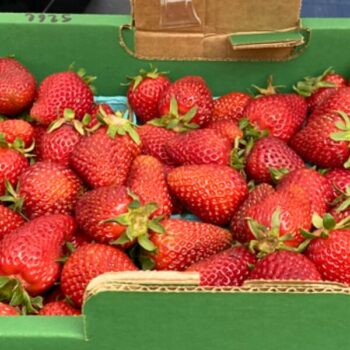
- Developed at UC Davis as a hybrid variety to thrive in the regions of coastal California and released in 2004.
- Name origin unknown. Although “Albion” is an ancient name for Britain or England.
- Appearance: Long symmetrical conical-shaped light red with a white center.
- Flavor & Texture: Crisp firm bite with a perfect balance of sweetness and acidity.
- Use: Great for eating fresh, not as great for baking.
- Typical harvest time: Day-neutral (everbearing) variety. Often one of the first varieties of the season in late May and is available throughout the summer months.
Honeoye
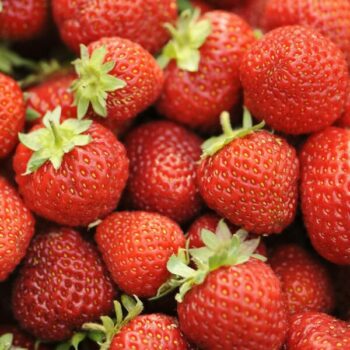
- Developed by Cornell Research Station, Geneva, NY and introduced in 1979.
- Named after a hamlet in the town of Richmond, NY, Honeoye is derived from the Seneca word “ha-ne-a-yah” which means lying finger or where the finger lies.
- A rarity at the farmers markets.
- Appearance: Conic shape, bright red and large in size.
- Flavor & texture: Sweet and tart with a firm texture. Some say the flavor is reminiscent of Strawberry Kool-Aid.
- Use: Excellent fresh eating. Retains good quality when frozen.
- Typical harvest time: Short day variety – usually happening mid-May.
Hood
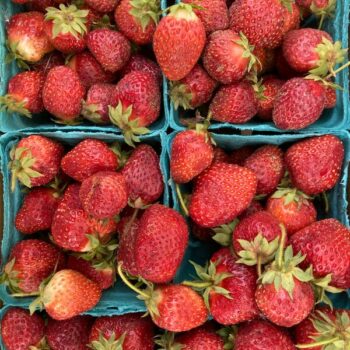
- Released in 1965 through a breeding project of OSU.
- Named after Mount Hood.
- Appearance: Small to medium-sized, intense deep red all the way through the middle.
- Flavor & Texture: A crowd favorite flavor bomb! Juicy, super sweet (high sugar content) and softer than most other varieties.
- Use: Fragile and must be used quickly after picking. Fresh eating and processing into jams, jellies and sauces.
- Typical harvest time: June bearing variety – available for a very short window of 2 to 3 weeks in early June.
Mary’s Peak
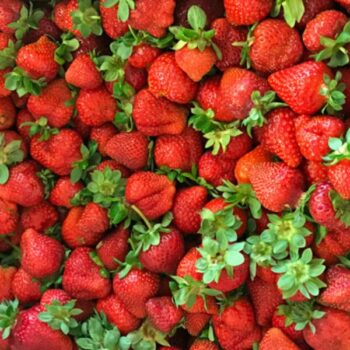
- Developed by the US Department of Agriculture in conjunction with Oregon Agricultural Experiment Station and released in 2018.
- Named after the highest peak in Oregon’s Coast Range.
- Appearance: Medium to large size, deep red throughout.
- Flavor & Texture: Sweet and firm.
- Use: Best for fresh eating or freezing.
- Typical harvest time: June bearing however often available through mid-July.
Seascape
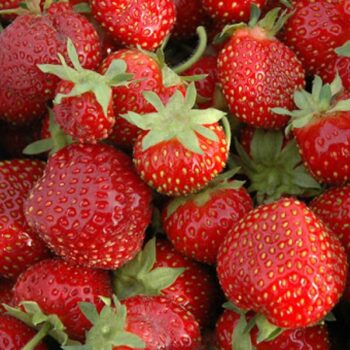
- Developed by the University of California breeding program in the 1980’s for the California strawberry industry as a variety resistant to viral diseases. Released to the public in 1992.
- Also specifically bred to thrive in the challenging conditions of California’s coastal regions, hence the name.
- Appearance: Large, red, round and evenly shaped with a heart-shaped middle.
- Flavor & Texture: Each berry can vary in sweetness, tanginess and quality. When they’re good, they’re great!
- Use: Great all-purpose strawberry. Best for fresh eating but holds up well in baking and freezing.
- Typical harvest time: Day-neutral (everbearing) variety – continuous production from late May to September.
Shuksan
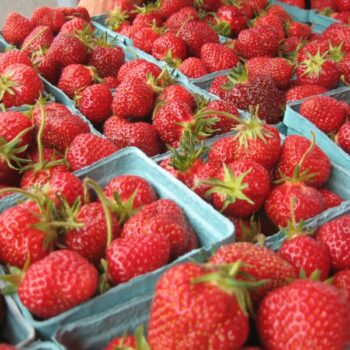
- Developed and introduced in 1970 by the breeding program at Washington State University.
- Named for Washington’s Mount Shuksan.
- Appearance: Large, glossy, bright red with a broad wedge shape, heart-shaped middles and yellow/red seeds.
- Flavor & Texture: Full-bodied flavor with a medium-firm texture.
- Use: Great for eating fresh, freezing whole, and making preserves and jam. Suitable for baking as they hold up better to heat.
- Typical harvest time: June bearing, late May to mid-June.
Sweet Sunrise
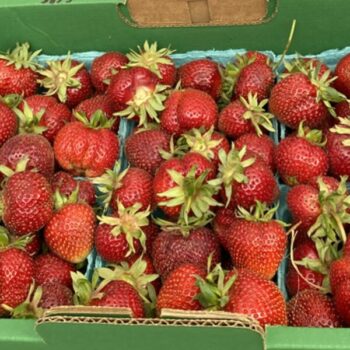
- Introduced in 2014, developed by Oregon State University in conjunction with the Oregon Agricultural Experiment Station and the Washington State University Agricultural Service.
- Appearance: Medium to large sized, firm with a deep, dark red color throughout.
- Flavor & Texture: Balanced sweetness and firm.
- Use: Good for fresh eating, processing or freezing.
- Typical Harvest Time: June bearing, late May through mid June.
Tillamook
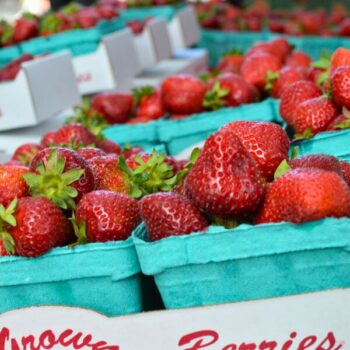
- Oregon State University and Washington State University worked on this variety for 8 years before introduction to the market in 2004.
- Named for the Tillamook tribe of Native Americans.
- Appearance: Large sized, symmetrical berries
- Flavor & texture: Sweet taste and firm texture.
- Use: Good for eating fresh or freezing whole.
- Typical harvest time: June bearing, entire month of June.
